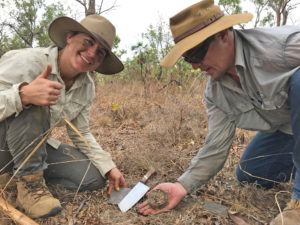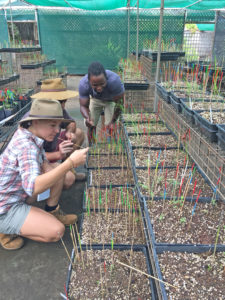28 November 2017
How do savanna landscapes change due to gamba grass invasion, and is it possible for these ecosystems to be restored?
These questions are being investigated by our project which aims to improve our ability to manage invasive grasses across the north, by reducing high-risk gamba fires and by predicting and preventing ecosystem failures due to invasive grasses like gamba.
Recent fieldwork in the Daly River and Darwin regions has involved measuring the fuel loads and patterns of curing (drying out) in gamba-invaded and native grass savanna ecosystems. Researchers are also measuring the amount of native plant seeds in the soil from these areas which can tell us if and how invaded savanna might recover following control measures.
With many stakeholders keenly interested in gamba grass management, project leaders Dr Natalie Rossiter-Rachor (CDU) and Professor Samantha Setterfield (UWA) have given a range of presentations on their work at meetings and conferences in both the Northern Territory and Queensland, as well as the USA.

Collecting soil samples, photo Daisy Lippiatt.

Checking seed germination, photo Natalie Rossiter-Rachor.
Want to know more about the Resilient Landscapes Hub's activities and our research into practical solutions to environmental problems? Stay informed about activities, research, publications, events and more through the Hub newsletter.